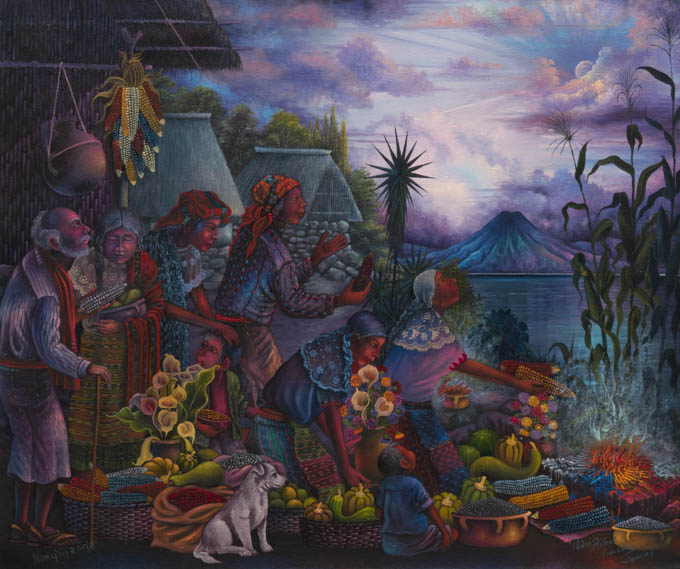|
Nim raqan q’iij nim raqan aaq’a’ (Equinox) by Pedro Rafaél González Chavajay, 2015.
The Maya, like many other ancient civilizations, watched the night sky. They were extremely accurate in their knowledge
of the movement of the sun, moon, Venus, and other planets. The dates of the solstices and equinoxes were known. Buildings at the center
of their cities were situated in such a way that the light from the sun would align through openings on those days. Even today, ajq’ijaab’
(Maya day keepers) perform rituals in the plaza at sites like Uaxactun, where on the equinox the sun lights up the interior of a room at
the top of the pyramid. Most Maya, however, honor the day with a much smaller, more personal ceremony at sunrise, such as in the painting.
The Maya ancestral belief is that the sunrise marks the beginning of all things. Around the equinoxes, marking the start of spring and of autumn,
the Maya have great celebrations with seed-blessing rituals for the next planting. For the Maya, the equinoxes mean the beginning of the time
to plant or harvest their main dietary crops, one of which is corn. They perform various ceremonies to celebrate astrological movements with
the sun in line with the Equator. They believe that this event provides a balance in the human being and the universe. ajq’ijaab’ perform
rituals such as the one depicted in the painting. Re-enactment of Maya ball games, which symbolize the regeneration of life and serve to
guarantee the cosmic order, may be performed along with folkloric presentations. In this painting we see people of San Pedro la Laguna
blessing ears of the four colors of corn. Candles of four colors melt in the sacred fire.
|
